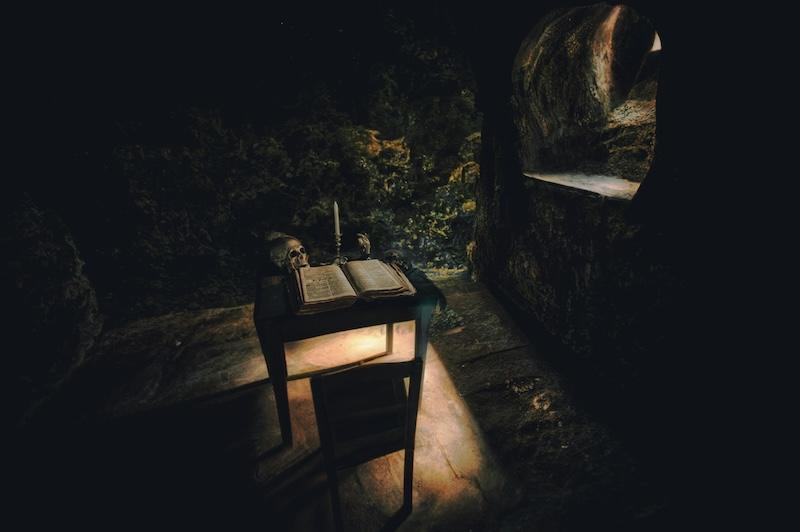Indie horror author C.C. Adams ponders the importance of building a body of work as a creative being.
In terms of indie horror authors, there’s a lot of us. So many, that the more genre conventions I go to (FantasyCon, StokerCon, et al), I’m forever reminded that there are so many of us. Certainly, from seeing the results of various submission calls from various publishers—who will, on occasion, cite how many submissions they got (e.g. over a thousand).
That’s a lot of authors.

And because I’m a curious child, what I often do is a brief Google search on such authors to see who they are, what they do, and how they do it. One of my go-to avenues to learn more about them is to go to Amazon and look at their page… assuming they have one. Ditto goes for their website—again, assuming they have one.
Many times, I’ve seen an author comment on social media that they’ve submitted a story to a publisher, or received a rejection from a publisher, or even received an acceptance from a publisher. While I appreciate that the numbers may be stacked against ‘you’ as an indie author, especially when you may have around a thousand other authors who’ve submitted works for the same submission market as you, on some level it strikes me as odd to celebrate/lament the win/loss to any degree. Why? Because, as an author, it’s your job to write—and certainly, if you want your work to be put in front of an audience, it’s your job to get it there; regardless of whether it’s traditionally published or self-published.
(Photo by Valentin Antonini on Unsplash)
It’s not just about the writing
Which brings me to my point, along with the thrust of this article.
Putting your work out there is one thing. Getting an audience to buy into it is something else entirely. But what will make it easier for an audience to do just that is if there’s a body of work to your name—whether it’s short stories, novels, some length in between, or an assortment of tales of varying lengths.
Let’s look at something slightly different, for a minute: Think of your favourite actor. Your favourite recording artist. Your favourite clothing brand(s). Chances are that you don’t buy into them for just one particular piece they’ve done. Your introduction to them might be down to that piece, but what brings you back to them time and time again is their aesthetic. The skill and nuance of their performance. Their vocals and lyrics. The quality of fabric and the tailoring that other manufacturers fall short of. For me, Timberland chukkas (read: ankle-high boots) are a prime example. Not only do they have a basic and rugged aesthetic—at least, the ones I buy do—but unlike many footwear brands, Timberlands come in half-sizes as well as varying widths, so there’s even better chance that you’ll find a better fit. That and the fact they’re light, sturdy and durable, which means a seasoned lifter like me can do my best squats in a pair.
And so it is with being an author. Certainly, as a new author, it may be easy to get caught up in your first story, regardless of its length. You want it to do well, if you’ve sunk time, heart, and soul into it. You’ve hung on by your fingernails until you had a finished draft; you then went back over it to tighten up said draft; you then engaged those close to you and those trusted to give constructive feedback to get an even stronger draft… and then you submitted it to a publisher that rejected it. Chances are you got a form (blanket) rejection, and even if you got specific feedback, your work was still rejected.
Write, edit, repeat
Here’s the thing: If your aim is just to write a story, then fair play to you. If you’re only writing for yourself, then fair play to you. You’ve done that. Getting someone to read it, let alone like it, is something else. But if you want to be an author/ writer—whatever you want to call it—then your job is to write. And, as such, one story is just that—one story—in a body of work that might encompass short stories, novelettes, novellas, novels, collections, and non-fiction pieces. Which means a cycle of start writing, finish writing, and repeat.
As a horror author, regardless of how someone discovers you and your work, when it happens, you want to engage them. Wow them. Maybe even scare the shit outta them. There’s a chance that even if they make it to the end of your story, they don’t want to read anything else by you, or at least they’re not motivated enough. And this is a truism of life—no matter how good you are at your game, whether it’s storytelling, music, sculpture, sport, or whatever, there will always be those who simply aren’t moved by what you do. In which case, they’ll simply move on. For those that are moved by what you do, or are at least intrigued by it, they’ll look to see what else you’ve written.
But, if you actually engage that person? If your style of storytelling is fresh and original? If your narratives truly linger after the final page is read? If your work is intriguing and nuanced enough that the reader can find something new if they re-read it? These are the kinds of things that hook a reader, and these are the kinds of things that get them fiending for more. To search you on Google. To go to your Amazon page, and scroll through your books, giving appreciative nods to the covers, checking out a synopsis or two. Visiting your website to check out everything from your bibliography to your itinerary. Or checking you out on social media just to see what you’re about as a person: from writing to politics, to the latest instalment in the MCU.
That’s where the body of work comes in.
Again, this depends in part on what you want from your writing. If you just want to dabble in writing, or try writing a story, then fair play to you. If you want a body of work, then you need to write. Period. You aren’t getting the former without the latter—the same way you’re not making an omelette without breaking the egg first.

(Photo by Jennifer Chen on Unsplash)
Give ’em something to talk about
Let me tell you what I want from my writing.
First and foremost, I want to disturb people. I’ve said this countless times, because I simply can’t hammer this point home enough. It’s one thing to write a horror story and have it entertain people, or at least keep them occupied for a while. You can argue that this is splitting hairs, but I never want to just write something when I can craft something. Something vivid, something nuanced. Something intriguing that holds up to repeat reading. And definitely something that disturbs you and maybe scares the shit outta you.
All of this so that when people read my work, they’re intrigued to see what else I’ve written. A body of work is something your audience can lose themselves in, discuss, debate, dissect—whether it be friends, fans, genre aficionados, reviewers, critics, academics, historians, the upshot is the same. How I’ve outdone myself with the latest one. How it’s still good, but not as strong or coherent as the last one. How I must have been high on something when I wrote that one. How it’s just too slow to get into. How they picked up on possible religious overtones in that one (even if I had nothing like that in mind when I wrote it). You give people something to lose themselves in, and something to talk about. Something that keeps them engaged.
So.
What do you want?
If it’s one story, then fair play. But, if it’s a body of work?
Make sure there’s weight to that body.



